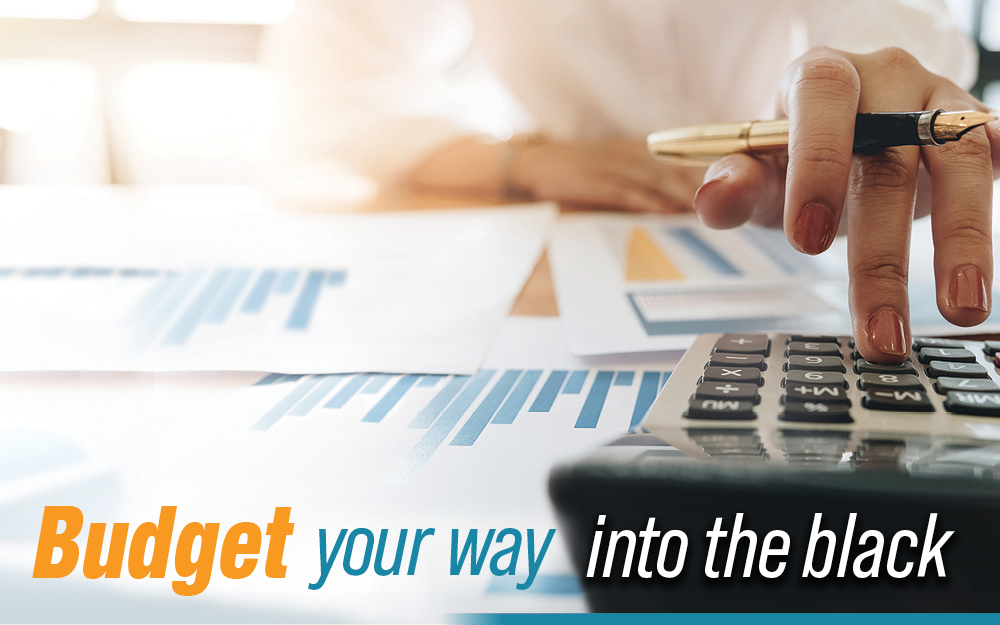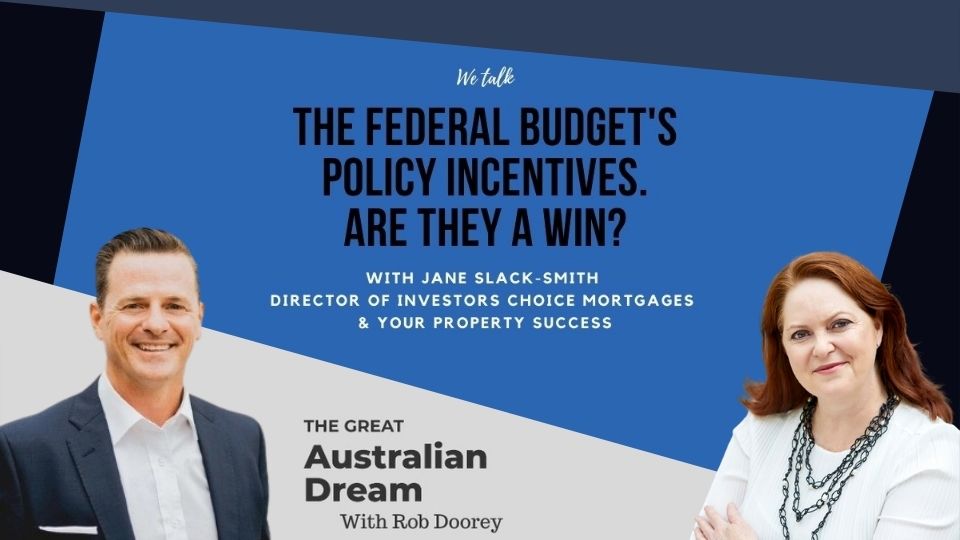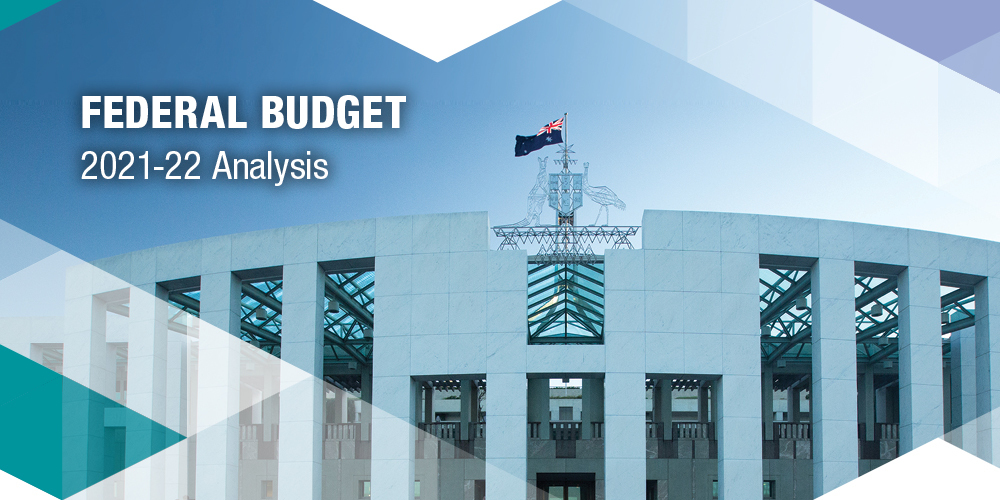ACT’s Professional Advantage: Save $70,000+ in Australia’s Most Stable Market
The Australian Capital Territory offers first home buyers a unique combination of Australia's most stable employment market and strategic...

$2.2 trillion. That’s how much Australian households owe right now, according to the latest ABS stats.i Household liabilities grew by $1.2 billion in the last quarter alone. Real household debt per person has risen steadily by around 2 per cent per year, and now sits at around $79,000 per person.ii
Sound scary? The good news is, there are ways you and your family can buck this trend and ensure your finances stay out of the red and in the black. The key is good old-fashioned budgeting.
Budgeting is simply the most straightforward, proactive way to ensure you will always have enough money for the things you need whilst allowing you to put a little aside for the things at the top of your wish list. That’s the practical side of it. A budget can also help you reduce financial stress, improve your family relationships, redefine your personal values and provide a good example for your kids or grandkids.
The first step is to do an audit of what you’re spending. You may also need to do a round-up of what you’re earning, if you have several income streams. Start by gathering as much evidence as possible; utility bills, receipts, bank statements etc. Make a tally of your outgoings. Be as accurate as you can; where you don’t have a record to substantiate a line item, try not to underestimate it.
Then, compare your income to your outgoings. If you spend more than you earn, you’ve got work to do. If you’ve got a surplus, that’s a great start, but there’s always room for improvement.
The second step is setting goals. Choosing well defined goals – beyond just ‘save more’ or ‘get rich’ – is important for your long-term budgeting success. Try setting at least a few short-, mid- and long-term goals. For example, in the short term, you might aim to reduce your spend on clothing by $100 a month. In the long term, you could aim to build up an emergency fund equivalent to six months’ household income.
If all this sounds familiar to you, chances are you’ve tried and not succeeded at budgeting in the past. That doesn’t necessarily mean you’re ‘bad with numbers’ or lacking discipline. There are several common reasons why budgets don’t stick. Budgets lacking in defined goals are often prone to failure. As are those that are too restrictive, allowing no room for spending on things like meals out or entertainment; anyone who’s tried to completely cut ‘fun’ spending knows how unrealistic this is. Many budgets also ‘break’ after a short time because they fail to account for unexpected emergency expenses, from vet bills to car repairs.
Once you’re aware of why your last budget didn’t succeed, you can start to build a better one.
The right technology can help make your budget more accurate, realistic, effective, and easy to stick to. You don’t even have to create a spreadsheet from scratch, or use complicated software on your PC. Carry a budgeting solution in your pocket with a handy smartphone app:
These government-produced apps draw on tonnes of research to help you implement proven savings and budgeting strategies.
Pocketbook syncs with your bank account, automatically sorts your expenses into categories, and receive automatic alerts and warnings to keep you on track.
In the case of YNAB, one of the world’s most popular budgeting apps, it’s a case of spending money to save money. According to their stats, the average user saves US$3,300 in their first nine months – that’s over $4,300 Aussie dollars.
Your budget needs to work for you and your individual circumstances and will require attention on a regular basis to make sure it’s still working for you. Get started today and you’ll soon be well on your way to achieving your saving goals.
i ABS, 5232.0 – Australian National Accounts: Finance and Wealth, Mar 2016
ii ABS, 4102.0 – Australian Social Trends, 2014 (Final): Trends in Household Debt

Stay up to date with the latest developments in the property market over the past month.
Our video takes you through an overview of the state of the property market, including a breakdown across all capital cities of the changes in dwelling values over the past month, as well as over a period of 12 months.
Please click here to get in touch if you’d like assistance finding the right loan for your situation.

by The Great Australian Dream with Rob Doorey
Well it’s now been a few days since the federal budget was handed down and there were a few incentives for first home buyers and over 60’s. In the latest episode of the Great Australian Dream podcast we’ll dig deeper than just the headlines with Property and Mortgage expert Jane Slack-Smith.
Click here to listen to this episode:
Most people in Australia live in houses. So when we talk about low risk property investing, I’m always looking about minimising my risk.
Often we talk about looking at the number of sales, the vacancy rate, the population demand, and the type of property because we’re minimising your risk over time. [This is] making sure that maximum amount of people are going to want your property.
I personally think that land goes up in value and, obviously, the property depreciates. So I want to have a land component.
But I don’t want to have a thousand square meter block in an area where the typical properties are 500 square meters unless I was going to subdivide, and that was my whole strategy.
So I’ll look at what the typical size block is and what the typical property is. And I want to look at the demographics and the typical number of renters.
If you’d like to know more about the buying process. Don’t make the common mistakes that could cost thousands of dollars.
Download the ebook buying process https://investorschoice.com.au/buying-process/
#sourceit #propertyinvestment #mortgagebroker

In his third and possibly last Budget before the next federal election, Treasurer Josh Frydenberg is counting on a new wave of spending to ensure Australia’s economic recovery maintains its momentum.
As expected, the focus is on jobs and major new spending on support for aged care, women and first-home buyers with some superannuation sweeteners for good measure.
With the emphasis on spending, balancing the Budget has been put on the back burner until employment and wages pick up.
This year’s Budget is based on a successful vaccine rollout which would allow Australia’s borders to open from mid-2022. The Treasurer says he expects all Australians who want to be vaccinated could have two doses by the end of the year.
So far, the economic outlook is better than anyone dared hope at the height of the pandemic just a year ago, but challenges remain.
Unemployment, at 5.6%, has already fallen below pre-pandemic levels and is expected to fall sharply to 5% by mid-2022. But wage growth remains stubbornly low, currently growing at rate of 1.25% and forecast to rise by just 1.5% next year. This is well below inflation which is forecast to rise 3.5% in 2020-21 and 1.75% in 2021-22.
The treasurer forecast a budget deficit of $161 billion this financial year (7.8% of GDP), $52.7 billion less than expected just six months ago, and $106.6 billion (5% of GDP) in 2021-22.
Net debt is forecast to increase to an eye-watering $617.5 billion (30% of GDP) by June this year before peaking at $980.6 billion four years from now.
The large improvement in the deficit has been underpinned by the stronger than expected economic recovery and booming iron ore prices. Iron ore prices have surged 44% this year to a record US$228 recently.i
The centrepiece of the Budget is a $17.7 billion commitment over five years to implement key recommendations of the Aged Care Royal Commission. This includes $7.8 billion to reform residential aged care and $6.5 billion for an immediate investment in an additional 80,000 Home Care Packages.
In other health-related initiatives, the Treasurer announced additional funding of $13.2 billion over the next four years for the National Disability Insurance Scheme, taking total funding to $122 billion.
And in recognition of the toll the pandemic has taken on the nation’s mental health, the Government will provide an extra $2.3 billion for mental health and suicide prevention services.
After criticism that last year’s Budget did not do enough to support women’s economic engagement, this Budget works hard to restore gender equity. The Women’s Budget Statement outlines total spending of $3.4 billion on women’s safety and economic security.
Funding initiatives include:
While childcare is of benefit to all parents, it is generally mothers who rely on affordable care to increase their working hours.
As widely touted, proposed changes to superannuation and support for first home buyers also have women in mind.
In a move that will benefit part-time workers who are largely women, the Treasurer announced he will scrap the requirement for workers to earn at least $450 a month before their employers are obliged to pay super.
The Government will also expand a scheme allowing retirees to make a one-off super contribution of up to $300,000 (or $600,000 per couple) when they downsize and sell their family home. The age requirement will be lowered from 65 to 60.
In addition, from 1 July 2022 the work test that currently applies to super contributions (when either making or receiving non-concessional or salary sacrificed contributions) made by people aged 67 to 74 will be abolished.
Despite opposition from within Coalition ranks, Superannuation Guarantee payments by employers will increase from the current 9.5% of earnings to 10% on 1 July and then gradually increase to 12% as originally legislated.
Housing affordability is on the agenda again as the property market booms. To help first home buyers and single parents get a foot on the housing ladder, the Government has announcediv:
In a move that will please cash-strapped pensioners, the Treasurer announced that the Pensions Loan scheme – a form of reverse mortgage offered by the Government – will allow people to withdraw a capped lump sum from 1 July 2022. Currently income must be taken as regular income, which makes it difficult to fund larger purchases or home maintenance.
Under the new rules, a single person will be able to withdraw up to the equivalent to 50% of the maximum Age Pension each year, currently around $12,385 a year ($18,670 for couples).
The Government will also introduce a No Negative Equity Guarantee which means the loan amount can never exceed the value of the home.
Approximately ten million Australians will avoid a drop in income of up to $1,080 next financial year, with the low-and-middle-income tax offset extended for another 12 months at a cost of $7.8 billion.
Anyone earning between $37,000 and $126,000 a year will receive some benefit, with people earning between $48,001 and $90,000 to receive the full offset of $1,080.
| Taxable Income | Offset |
|---|---|
| $37,000 or less | $255 |
| Between $37,001 and $48,000 | $255 plus 7.5 cents for every dollar above $37,000, up to a maximum of $1,080 |
| Between $48,001 and $90,000 | $1,080 |
| Between $90,001 and $126,000 | $1,080 minus 3 cents for every dollar of the amount above $90,000 |
Source: ATO
With companies warning of labour shortages while the nation’s borders are closed, the Government has been under pressure to do more to help unemployed Australians back into work.
So, the focus in this Budget is squarely on skills training with $6.4 billion on offer to increase workforce participation and help boost economic growth.
This includes a 12-month extension to the Government’s JobTrainer program to December 2022 and an additional 163,000 places. The Treasurer also announced funding of $2.7 billion for 170,000 new apprenticeships.
Job creation is also at the heart of an extra $15.2 billion in road and rail infrastructure projects, expected to create 30,000 jobs. This is on top of the existing 10-year $110 billion infrastructure spend announced previously.
With an election due by May 21 next year, this is as much an election Budget as a COVID-recovery one. Although another Budget could be squeezed in before an election, it would have to be brought forward from the normal time.
The Government will be hoping that it has done enough to provide funds where they are needed most to continue the job of economic recovery.
If you have any questions about any of the Budget measures and how you might take advantage of them, don’t hesitate to call.
Information in this article has been sourced from the Budget Speech 2021-22 and Federal Budget support documents.
It is important to note that the policies outlined in this publication are yet to be passed as legislation and therefore may be subject to change.
i https://tradingeconomics.com/commodities (viewed 11/5/2021)
The Australian Capital Territory offers first home buyers a unique combination of Australia's most stable employment market and strategic...
The Northern Territory offers Australian first home buyers the most generous grant support in the nation, with the HomeGrown Territory...